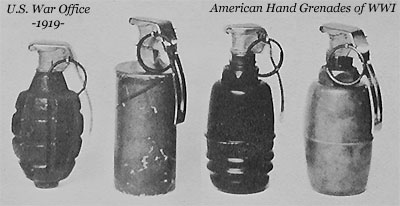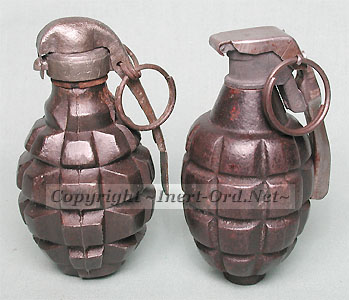With the entry of the United States into the First World War it also found itself without many of the "modern" devices necessary on the battlefields of Europe. With time short, the U.S. Army was supplied by the French and British with many weapons missing from its inventory, including the hand grenade.
America, evaluating those weapons, developed versions better suited to the desires of the War Department.
Four were produced in time to see combat use.

Left to Right:
Mk.II Defensive Fragmentation (Mk.II Fuze/Mk.I Body)
Mk.III Offensive Blast
Mk.II Gas
Mk.II Phosphorus
Offensive types used a non fragmenting body, in the case of the American Mk.III this was made of cardboard. It caused casualties by blast effect, effective only within a limited radius, so could be used in the open.
Gas grenades were for clearing tight twisting confines of the trenches where an explosive grenade was ineffective.
Phosphorous grenades were used in offensive barrages to create walls of thick white smoke to screen advancing infantry.


